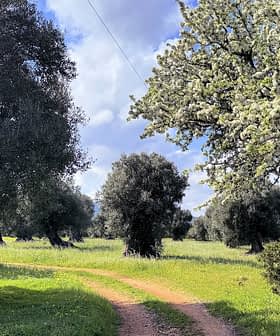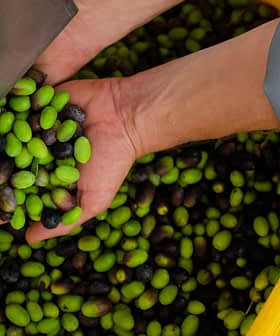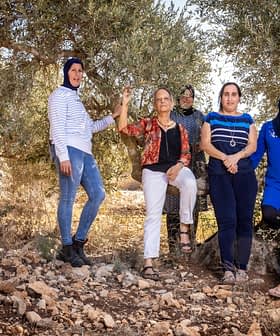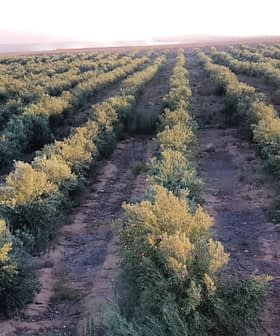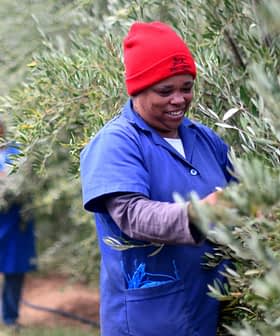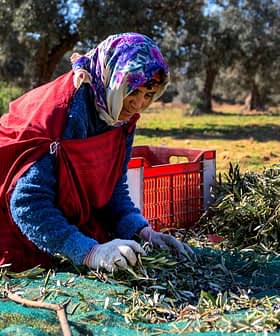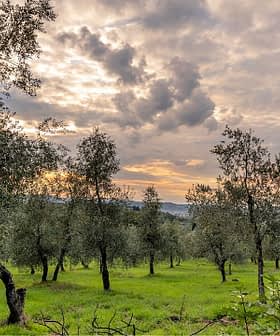Conflict and Weather Extremes Dwindle Lebanese Harvest

In November, the International Olive Council estimated that Lebanon would produce 18,000 tons of olive oil in the current crop year, in line with the five-year average.
However, adverse weather conditions exacerbated by climate change led many local producers to believe the final figure would be considerably lower.
We produced only 20 percent of what we were expecting. I think I’ve lost nearly 10,000 liters of olive oil.
According to Murr Television, a local media outlet, yields have dropped from 120 liters per square meter to less than 20 liters in certain regions.
See Also:2023 Harvest UpdatesThe escalation of tensions along the southern border with Israel compounded the challenges faced by olive oil producers.
Since the October 7th attack by Hamas, a political and military organization backed by Iran that governs Gaza, on Israel, there have been near-daily exchanges of fire between the Israeli Defence Force and Hezbollah, a pro-Iranian political party and militia. The conflict has severely disrupted the olive harvest.
According to figures from the Ministry of Agriculture, at least 386 fires caused by Israeli bombings destroyed 50,000 olive trees.
Save the Children, a charity, similarly estimates that about 47,000 olive trees have been destroyed in the conflict. The group also believes 86,000 people have been displaced from southern Lebanon, leaving olive trees unharvested.
Rose Bechara Perini, the founder of Darmmess, was among those affected. She started her harvest on September 24th in Deir Mimas, a village two kilometers from the border.

Bechara Perini stopped harvesting on October 9th, taking what little olive oil she had produced north to Beirut. (Photo: Rose Bechara Perini)
“We already knew that we were going to have a small quantity of olive due to a strong wind hitting hard during spring, making flowers fall,” she said. “But that was not all: There have been several days of rain at the end of September, which never happens.”
“And then, there was the bombing, from very far at the beginning, and then, it got closer. I couldn’t risk the life of everyone,” recalled Bechara, who works with around 15 farmers in Deir Mimas.
She halted her harvest on October 9th amid the escalating violence.
The Lebanese producer thanked her farmers, collected everything she could, filtered and bottled it, and headed back to Beirut.
“We produced only 20 percent of what we were expecting,” Bechara said. “We were not able to serve the 14 countries we usually export to. I think I’ve lost nearly 10,000 liters of olive oil.”
Despite efforts to save what they could, producers faced significant losses. Tony Maroun, another olive oil producer based in Jounieh, north of Beirut, experienced a similar decline in production.
“Unfortunately, we could reach only 50 to 60 percent of our usual production this year,” he said. “The quality of the oil was good, but the quantity was much lower due to the season, the harvest and the weather, but also because many farmers couldn’t harvest their fields.”
The producer runs a 60-year-old company working with nearly 70 farmers around Lebanon, a quarter of them are based in the south of Lebanon.
Despite these challenges, the demand for Lebanese olive oil has increased internationally. Maroun noted a two percent increase in exports this year, underscoring the growing global interest in Lebanese olive oil.
However, the rise in demand has contributed to higher prices, making it increasingly unaffordable for local consumers, particularly amid Lebanon’s ongoing economic crisis.
“Will the local consumer still be able to buy good Lebanese olive oil at an affordable price? It’s becoming harder and harder,” Maroun said.
According to producers, prices had already risen before the war due to the scarcity of olives and the cost of energy.
“The price per kilogram of olives on the tree went from $0.60 (€0.56) to a little over $1 (€0.93),” Bechara said.
While olive oil remains a staple in Lebanese cuisine, its accessibility has diminished, with prices soaring to $6 or $7 for a 500-milliliter bottle. For many, olive oil is fast becoming a luxury item – a stark contrast to its previous ubiquity in Lebanese households.

